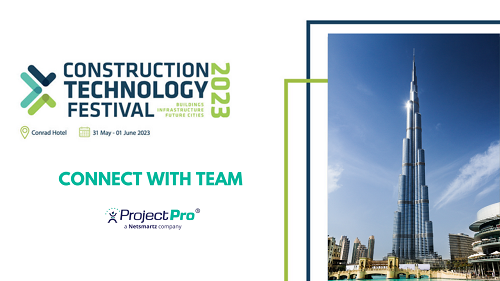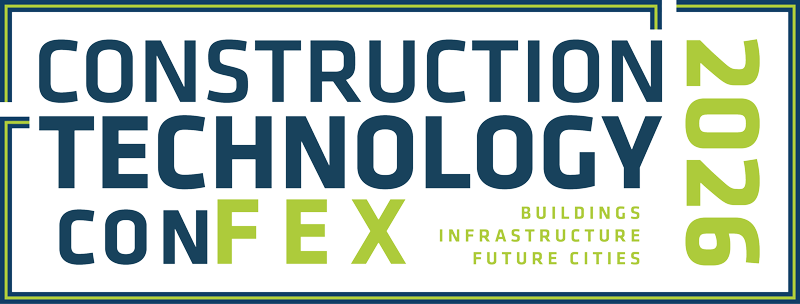June 1, 2023
Shaping the Future of Construction: Witness the Breakthroughs in Nanotechnology at Construction Technology Event
In the realm of construction, innovation knows no bounds. From big data to drones, there have been a lot of innovations.
And one of them is Nanotechnology.
Yes, you read that right.
It is a cutting-edge innovation that has made significant strides in revolutionizing the way we build structures. By manipulating matter at the nanoscale, nanotechnology offers immense potential for enhancing the strength, durability, and reliability of buildings. Although it has been part of discussions in events like the construction technology festival, which brings together industry professionals to showcase and discuss innovative construction technology.
However, whether you are new to this technology or thinking of using this technology in your projects. You must be looking for the answer to what this technology is and how it impacts construction.

Therefore, in this article we will delve into the world of nanotechnology in the construction industry, exploring its advantages, and transformative impact on building robust and dependable structures.
What is Nanotechnology in Construction?
What comes to mind when you read the term "nanotechnology"? Is it tiny robots that resemble insects? However, it goes beyond this.
Well, one billionth of a meter is a nanometer, and anything less than 100 nanometers has little influence on gravity and electromagnetism. The changes from the world we are familiar with at that scale are so extreme that they are essentially unthinkable.
In this technology, materials at the nanoscale—typically with diameters ranging from 1 to 100 nanometers—are manipulated and controlled. By combining nanoparticles, nanofibers, and nano additives into building materials, nanotechnology provides creative solutions in the construction industry. These small particles' special qualities improve the performance of conventional building materials, resulting in more substantial, longer-lasting structures.
How Nanotechnology is Used in Construction?
So now a very important thing- how it is used. Well it is used in many ways, including:
- Nanomaterials: Nanoparticles, nanofibers, and nanotubes can be incorporated into traditional construction materials, such as concrete, steel, and coatings. These nanomaterials enhance the mechanical strength, flexibility, and durability of the structures.
- Self-Cleaning and Air Purification: Nano-coatings applied to surfaces can make them self-cleaning by repelling dirt and water. Additionally, nanomaterials can purify air by breaking down pollutants and harmful gasses.
- Energy-Efficient Buildings: It enables the development of advanced insulation materials with improved thermal properties. Nanogels, for instance, offer enhanced insulation while maintaining thin profiles, resulting in energy-efficient buildings.
- Sensors and Monitoring: Nanosensors embedded in construction materials can provide real-time data on structural integrity, temperature, humidity, and stress, aiding in preventive maintenance and ensuring safety.
- Water and Air Filtration: Nanomaterials with high surface area-to-volume ratios can efficiently filter and purify water and air, removing contaminants and improving overall quality.
How Nanotechnology Helps Make Buildings Strong and Reliable?
Well here we want to bring to your point if you ever get the chance to attend a construction event, keep that going. Do you know why we are saying this?
Well because, if you attend any of the construction technology events, it will be easier for you to understand in detail about new innovations like this technology. However, for now, we would give you these main ways how it helps in making buildings stronger and more durable. Keep reading!
- Reinforced Concrete: By incorporating carbon nanotubes or nanoparticles into concrete, its strength, flexibility, and durability are significantly enhanced. This leads to structures that can withstand higher loads, resist corrosion, and endure harsh environmental conditions.
- Self-Healing Materials: Nanoparticles can be added to building materials to enable self-healing capabilities. When cracks occur, these nanoparticles react with external stimuli to repair the damage, increasing the lifespan and resilience of the structure.
- Lightweight and High-Strength Materials: Nanocomposites offer an ideal combination of lightweight and high-strength properties. They can replace traditional materials, reducing the weight of the structure while maintaining or even improving its strength.
- Improved Fire Resistance: Nanocoatings can be applied to building materials to enhance their fire resistance. These coatings create a barrier that slows down the spread of flames, reducing the risk of structural failure and improving safety.
Now let’s go through the benefits nanotechnology offers in construction.
Benefits of Nanotechnology in Construction
- Enhanced Durability and Longevity: Nanomaterials strengthen structures, making them more resistant to wear, corrosion, and other environmental factors. This leads to longer-lasting buildings with reduced maintenance requirements.
- Energy Efficiency and Sustainability: Nanotechnology improves the energy efficiency of buildings through advanced insulation materials, resulting in reduced energy consumption and lower environmental impact.
- Increased Safety: Nanosensors embedded in construction materials enable real-time monitoring, helping to detect and prevent structural failures, and ensuring the safety of occupants.
- Cost Savings: The enhanced properties of nanomaterials reduce the need for frequent repairs and replacements, leading to long-term cost savings for construction projects.
- Sustainable Construction Practices: Nanotechnology enables the development of eco-friendly construction materials, reducing resource consumption and waste generation, and promoting sustainability.

Conclusion:
So lastly we would say that nanotechnology is revolutionizing the construction industry, offering exciting possibilities for building stronger, more durable, and sustainable structures. By incorporating nanomaterials, employing self-healing capabilities, and leveraging nanosensors, the construction industry can advance towards safer, more energy-efficient, and cost-effective practices.
However, we would suggest that you try to attend a construction event, it will surely help you update on new innovations.
Just Say Hi there!

